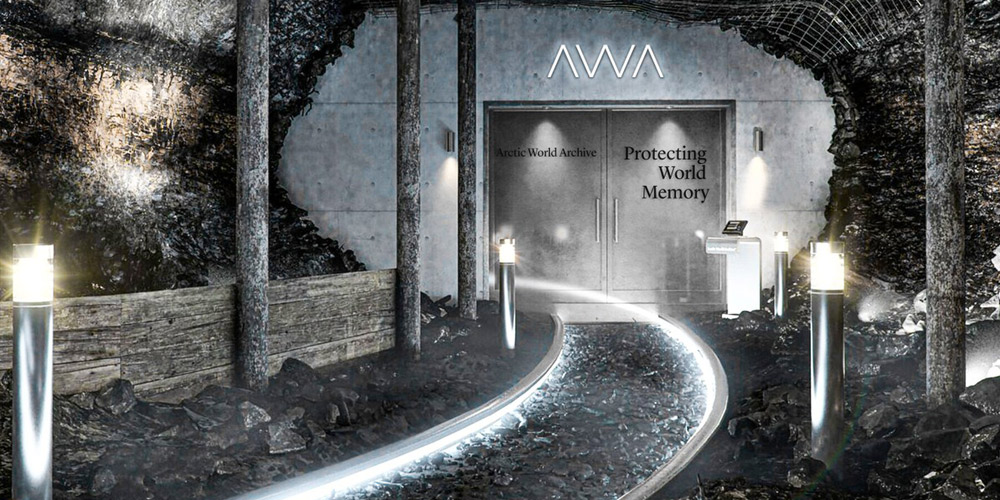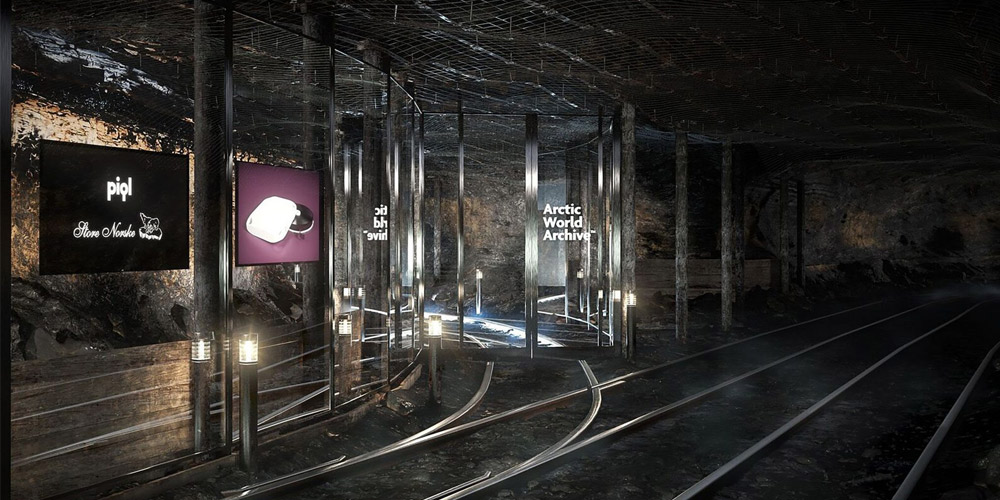Among the attractions and places Norway is famous, is the Svalbard Global Seed Vault. It's a facility that contains a vault that preserves a wide variety of plant seeds and their genes.
It's meant to ensure that the world can survive after large-scale regional or global crises.
And here, the vault is having a new neighbor, called the Arctic World Archive (AWA).
Located at an abandoned coal mine 3 that is owned by Norway’s state mining company Store Norske Spitsbergen Coal Company (SNSK), AWA was opened on March 27, 2017.
The facility aims to do for data, what the Svalbard Global Seed Vault has done with crop samples: providing a remote home for data that is safe from threats like natural disaster and global conflicts.

Data that is stored, is put into silver halide and polyester film reels provided and encoded by Piql, a Norwegian company that specializes in very-long-term data storage. They are then put inside a vault that is then placed several hundred meters below the surface.
And since the vault is situated deep enough, it can even sustain damage from nuclear and EMP weapons.
But unlike the Global Seed Vault which is partially funded by charities, the AWA is a for-profit business, operated by Piql and SNSK.
Their first customer included the governments of Brazil, Mexico, and Norway. The three countries have deposited a number of copies of various historical documents in the vault.
Considering the types of data the film storage can store, Piql founder Rune Bjerkestrand said that:

Piql claims that its proprietary film format can store data safely for at least 500 years, and maybe as long as 1,000 years, thanks to the permafrost below freezing temperature of the Arctic.
“No energy is needed whatsoever to maintain these temperatures,” said Bjerkestrand. “Deep in the permafrost it’s minus 5, minus 10 degrees; and it’s also quite a dry area. So cold and dry: it’s perfect for the long-term storage of film.”
What also makes Svalbard a safe place for data, goes beyond just temperature and depth.
The archipelago of Svalbard is also a remote island, which received an international treaty signed after the World War II. What this means, the territory can’t be used for military purposes.
“Historically what happens in wars — in the early stages of wars — is that archives are destroyed,” said Bjerkestrand. “So to have an archive which is protected, in a remote place which is regulated by international treaties, gives it that extra security that things cannot be manipulated or attacked.”
Anyone can digitally or physically put their data inside this vault for a price. Once it’s stored, clients can request its retrieval at any time. The process includes some extra security precautions.
Below freezing temperature, deep and away in remote islands that is considered one of the most geopolitically stable places on Earth, the data that is stored is also not connected to the internet.
"The concept is forever,” said Bjerkestrand.